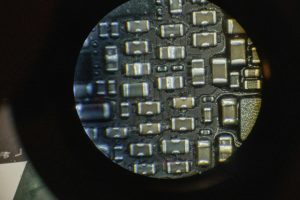Emergency Drone Deployment: Cars That Launch Help Before Impact
In today’s fast-paced world, every second counts in emergency situations. When it comes to saving lives, quick response and efficient deployment are critical factors. This is where the concept of emergency drone deployment comes in. Drones have proven to be a valuable tool in disaster relief efforts, providing real-time aerial footage and delivering essential supplies to affected areas. However, what if drones could be deployed even before the impact of a disaster or accident? This is where the idea of cars that launch help before impact comes into play.
The Need for Pre-impact Deployment
One of the biggest challenges in emergency response is the limited time frame between the occurrence of a disaster and the arrival of help. Whether it’s a natural disaster, a car accident, or a medical emergency, every second counts in saving lives. This is especially true in highly dense or remote areas where roadblocks and heavy traffic can significantly delay the arrival of emergency services.
With the rise of drone technology, it has become possible to provide help and assistance in the aftermath of a disaster. However, even with drones, there is still a delay in delivering aid as they need to be launched and flown to the affected area. This is where the need for pre-impact deployment arises.
Introducing Emergency Drones in Cars
The concept of cars that launch drones before impact is still in its infancy, but it has the potential to revolutionize the way emergency services are deployed. The idea is to integrate a drone launchpad in the roof of a car, along with a portable drone and necessary equipment. The car would also be equipped with advanced sensors and communication technology to detect an accident or emergency in its vicinity.
When an emergency is detected, the car’s on-board computer would communicate with the drone, initiating its launch from the launchpad. The drone would then fly to the location, providing a live stream of the situation to the emergency responders. It could also carry basic medical supplies or emergency kits, facilitating immediate assistance.
Benefits of Pre-Impact Deployment
The integration of emergency drones in cars offers several advantages in emergency situations. Firstly, it reduces the response time by eliminating the need to physically launch a drone and fly it to the location. This could be the difference between life and death in critical situations. Secondly, it provides an aerial view of the situation, giving emergency responders a better understanding of the scale and extent of the disaster. The live feed from the drone can also help them plan their response and prioritize the areas that need immediate attention.
Moreover, the use of drones in disaster situations is not limited to just providing aid. They can also be used for search and rescue operations, surveillance, and damage assessment. Therefore, pre-impact deployment of drones can significantly enhance the efficiency and effectiveness of emergency response efforts.
Challenges and Solutions
While the concept of cars that launch help before impact is promising, there are still some challenges that need to be addressed. The major concern is the safety of the drone launch when the car is in motion. This can be overcome by developing advanced sensors and communication technology that can accurately detect and map the location of the emergency. Other challenges include the cost of integrating this technology into cars and ensuring proper training to handle the drones.
Conclusion
The concept of emergency drone deployment through cars has the potential to revolutionize the way we respond to disasters and emergencies. It can bridge the time gap between the occurrence of an emergency and the arrival of help, providing timely assistance and ultimately saving lives. With ongoing advancements in technology, pre-impact deployment of drones could soon be a reality, making our world a safer place.











